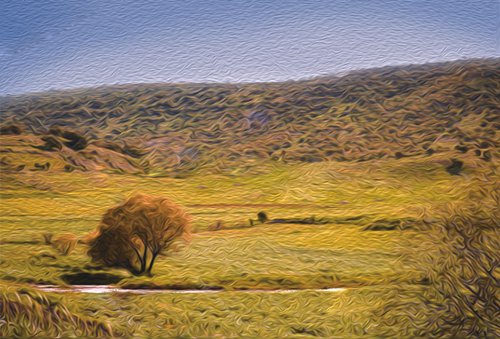Self-sufficiency helps Iran counter sanctions

Illustration: Liu Rui/GT
Foreign tourists who visit Iran the first time will be surprised at the calm of the Iranian people who are living under US sanctions. In Iran, there is a wide variety of food in supermarkets. All kinds of local cuisine, at bargain prices, fill Iran's restaurants.
Sights like these are common in many restaurants: big stacks of bread are on diners' tables, people take a slice and savor it with a local sauce as they chat over their meal. In some restaurants, bread is unlimited as long as people order other food. In a small restaurant at the city center of Tehran, we ordered two pizzas, French fries and a non-alcoholic beer.
The meal cost us 675,000 riyals, which was only about $5. According to the restaurant's owner, Iran's food prices are strictly controlled by the government. The apparent ample supply also shows that Iran has enough food to meet the needs of the people.
Food is the first necessity of the people. Every country's social stability is based on its food supply that meets people's needs. No matter how strict the US sanctions are, no serious problems in Iran would occur as long as its people have enough food to eat and clothes to wear.
But when travelling from Tehran to Isfahan then to Shiraz - a classic tourist route in Iran - visitors might doubt Iranian people have enough to eat.
The travel distance between Tehran and Shiraz is about 900 kilometers. During the tour, we see wavy wastelands with withered and yellow grass, or vast and barren deserts. The sun is blazing, and towering mountains are in the distance.
Visitors' impression will change when they arrive in Persepolis, a World Heritage Site near Shiraz. Tourist guides will tell you that Iran's water system dates back to before 800BC.
In 2014, the Food and Agriculture Organization of the United Nations listed Iran's Qanat irrigated agricultural heritage systems as a Globally Important Agricultural Heritage System. Such agricultural infrastructure made Iran once the most fertile area in the history of Asia. There was once mass production of grains, sugarcane, rice and date palm.
Iran's agricultural development peaked during the 1960s White Revolution. It began to decline due to the impact of industrialization and a surge in food imports caused by increasing foreign exchange earned from oil. As a result, landless farmers increased sharply and numerous villages were deserted, a significant cause of the dynasty's end.
Since then, governments have been devoted to developing a self-sufficient agricultural system. In 2004, Iran's wheat yield reached 14 million tons, making the country more than self-sufficient. The country's 45-year history of importing wheat ended, saving $1 billion a year in overseas expenditures. Wheat and rice are Iranians' main staple foods. Wheat bread is the main source of Iranians' caloric intake and Iran is the world's largest per capita consumer of such bread. In recent years, Iran's per capita rice consumption has also gradually increased, and the country has started to export rice. Dairy products such as yogurt and cheese are becoming important sources for calories and nutrients.
Iran is also diversifying its agricultural. The country's consumption of fruits, vegetables, leafy greens and nuts is increasing. Chicken has gained significant popularity with Iranians over the past two decades, surpassing beef and lamb as the main source of animal protein.
Mohammad Ali Javadi, Iranian Deputy Minister of Agriculture for Parliament Affairs, said in March that 87 percent of Iran's food is from domestic sources. Iran's agricultural output increased from 97 million tons in 2013 when Hassan Rouhani's administration came to power, to 122 million at the end of 2017.
Challenges facing Iran's agriculture still exist. Adjustments on imports and exports are necessary to fill in certain narrow gaps of food types to meet people's diversified tastes. Iran still needs to import some water conservancy facilities, agricultural machinery, fertilizers and beverages. These problems however will not have a major impact on Iran's food supply in the short term.
Agriculture is only part of Iran's self-sufficiency system. Foreign tourists can also see Iran's own bank card payment system, popular usage of QR codes, and indigenous equipment at the gas stations. It is this self-sufficient system that offers Iran a strong ability to counter sanctions.
The author is a senior editor with People's Daily, and currently a senior fellow with the Chongyang Institute for Financial Studies at Renmin University of China. dinggang@globaltimes.com.cn. Follow him on Twitter @dinggangchina

